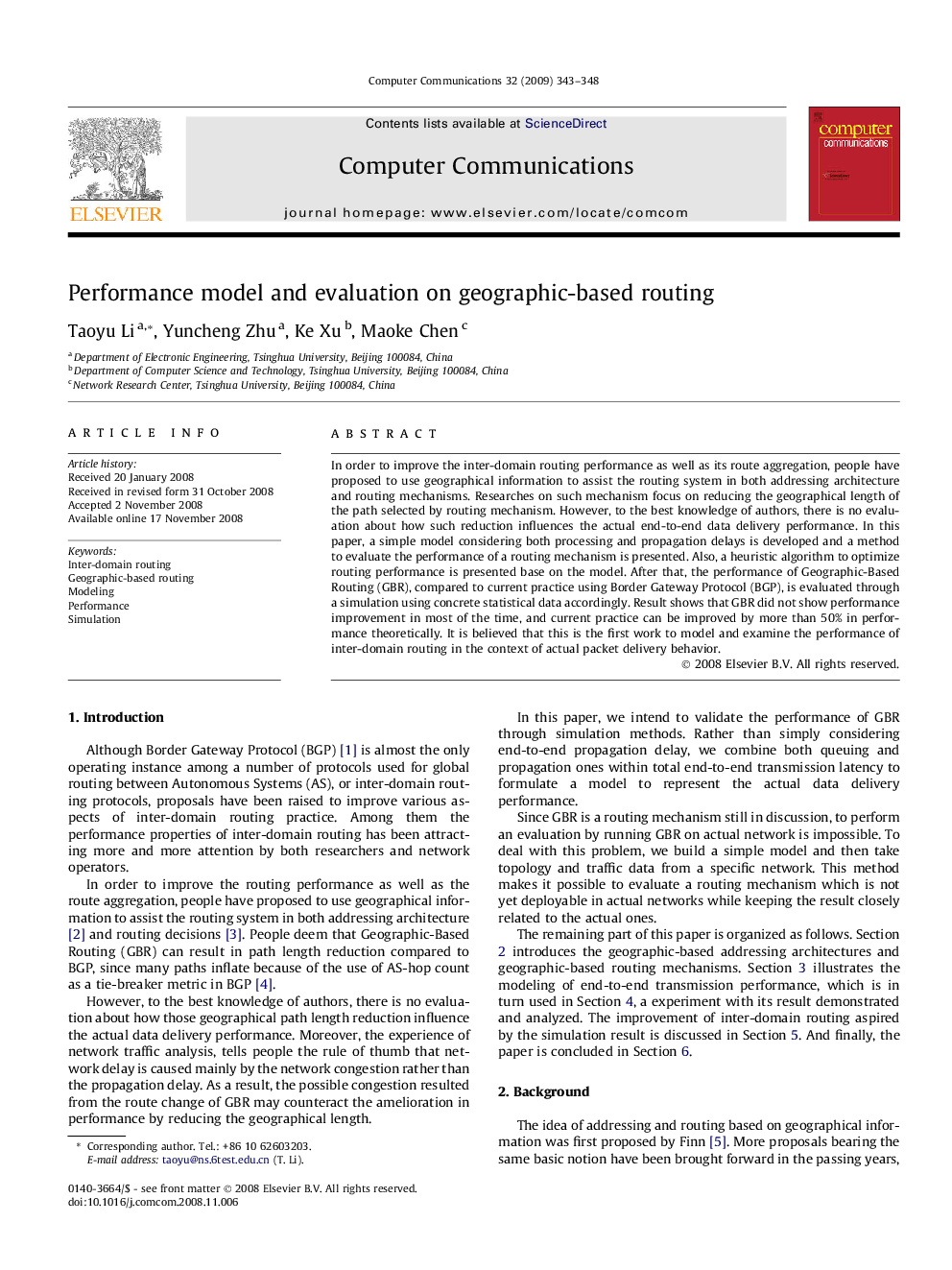| Article ID | Journal | Published Year | Pages | File Type |
|---|---|---|---|---|
| 449303 | Computer Communications | 2009 | 6 Pages |
In order to improve the inter-domain routing performance as well as its route aggregation, people have proposed to use geographical information to assist the routing system in both addressing architecture and routing mechanisms. Researches on such mechanism focus on reducing the geographical length of the path selected by routing mechanism. However, to the best knowledge of authors, there is no evaluation about how such reduction influences the actual end-to-end data delivery performance. In this paper, a simple model considering both processing and propagation delays is developed and a method to evaluate the performance of a routing mechanism is presented. Also, a heuristic algorithm to optimize routing performance is presented base on the model. After that, the performance of Geographic-Based Routing (GBR), compared to current practice using Border Gateway Protocol (BGP), is evaluated through a simulation using concrete statistical data accordingly. Result shows that GBR did not show performance improvement in most of the time, and current practice can be improved by more than 50% in performance theoretically. It is believed that this is the first work to model and examine the performance of inter-domain routing in the context of actual packet delivery behavior.
